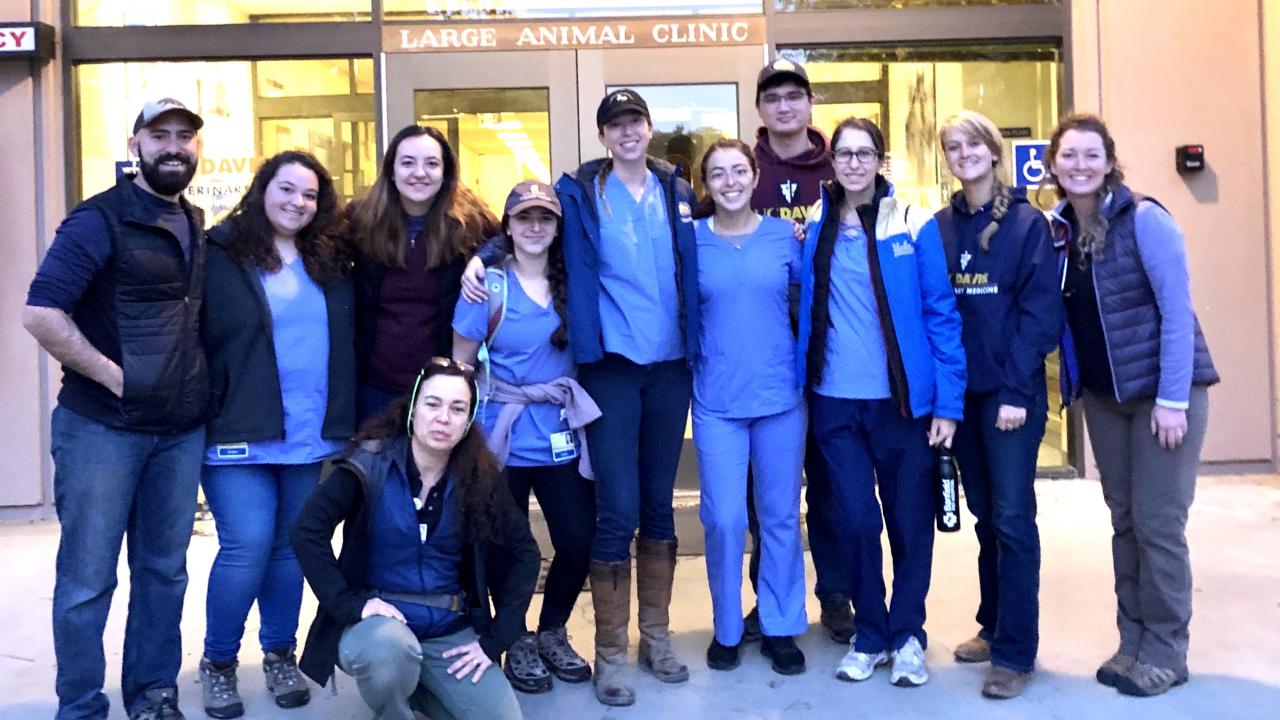
Improving Disaster Response for Animals
In November of 2018, fourth-year DVM student Hayley Dieckmann found herself in the thick of responding to the Camp Fire—California’s deadliest and most destructive wildfire to date. As a student leader of the UC Davis Veterinary Emergency Response Team (VERT), Dieckmann coordinated teams of student volunteers for deployment to the large animal evacuation center at the Butte County Fairgrounds.
VERT Director John Madigan initiated the response following a request for mutual aid response and deployment as assisted by California Veterinary Medical Association Medical Reserve Corp and the Yolo County Office of Emergency Services.
Over the course of the first 12 days of the wildfire, the team comprised of faculty and student volunteers triaged horses, pigs, llamas, goats, sheep, and chickens among other species. The VERT team used a standardized survey form to keep a record of 151 patients requiring medical care and documented their medical issues, including burns, respiratory disease, gastrointestinal illnesses, and lacerations, as well as illness severity, behavior, treatment and disposition.
With the assistance of faculty mentors, John Madigan and Lais Costa, Dieckmann published the results of this database, titled “Implementation of an Animal Health Database in Response to the 2018 California Camp Fire,” which appears in this month’s Journal of the American Veterinary Medical Association.
“This is a good opportunity for us to assess and improve our response,” Dieckmann said. “At the same time, having a database like this helps us better understand how animals are affected in wildfire disasters and therefore, what supplies and personnel we need to be prepared to treat them and provide the best standard of care possible.”
While she pointed out that the findings aren’t groundbreaking, she said the database could help the team understand the diseases and illnesses that will afflict certain species in wildfire disasters and to be proactively prepared to treat them.
“This helps us guide our students and our student training program to make sure they’re well prepared for what they will see in the field during a disaster response,” she said. “That’s what VERT has been striving for over the past four years—creating an extracurricular education program, and facilitating teaching and training opportunities for veterinary students. This is just another asset to help UC Davis graduate veterinarians that are prepared, able, compassionate and willing to help their communities in times of need.”
Dieckmann stressed that the greater data collection of epidemiology of animals affected in disasters would be best done nationwide in other types of situations such as flooding and tornadoes.
“Having a national or statewide database is something we could strive for. It would allow us to be better prepared, have greater response and facilitate reunification of these animals and their owners because we would have better tracking systems for them.”
Dieckmann, Madigan and Costa recently had another manuscript accepted in the Prehospital and Disaster Medicine Journal titled “Current Operational Model for Veterinary Care in Large Animal Shelters During a Disaster.” The journal is mostly centered on human-based disaster medicine, but it accepted this veterinary manuscript without revisions and will appear in print in another two to three months.
“This database is one aspect that we’ve been working with to improve our disaster management and dovetails into a larger system to standardize veterinary care in large animal shelters,” Dieckmann said. “This approach could really help people, communities, veterinarians and first responder agencies around the country.”
“The recent increases of wildfires has created a new normal which mandates the need for the type of veterinary disaster training VERT has been providing for the past two decades on a smaller scale,” Madigan added.
Additional authors include Drs. Lais R. R. Costa, Beatriz Martínez-López and John E. Madigan.
